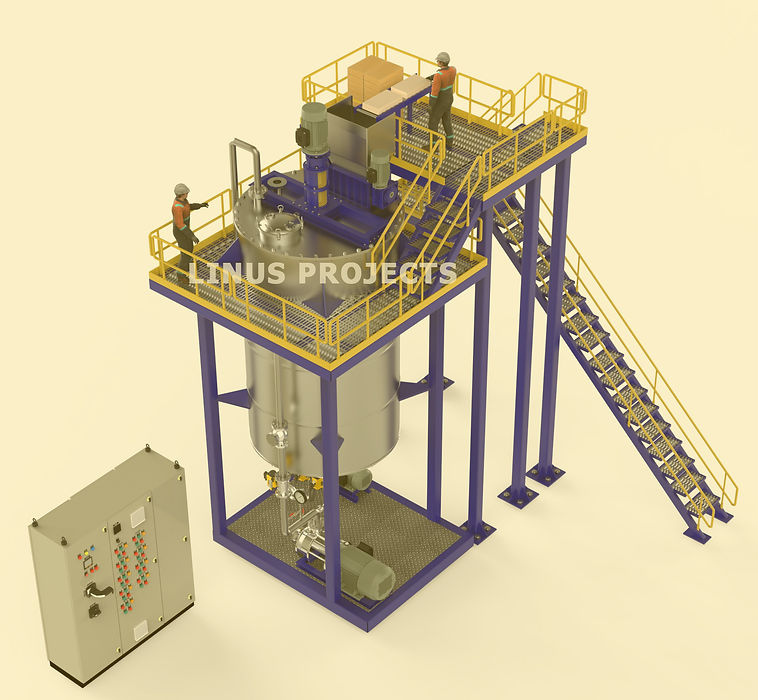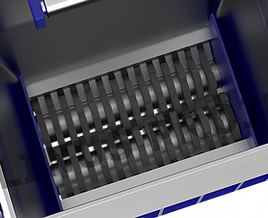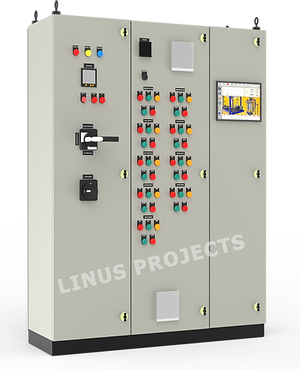
MODULAR VISCOSITY INDEX IMPROVER, LUBRICANT MFG PLANT


What is a Modular Viscosity Index Improver Mfg Plant?
Introducing our Modular Viscosity Index Improver Manufacturing Plant, designed to revolutionize the production process of viscosity index improvers. Built with innovation and efficiency in mind, our modular plant offers unparalleled flexibility, scalability, and performance, meeting the dynamic demands of the lubricant industry. This is use in Lubricant Blending Plant.
At the core of our plant is a modular design that allows for seamless integration of various components, including reactors, mixers, distillation units, and filtration systems. This modular approach enables rapid deployment, easy customization, and hassle-free expansion, ensuring optimal adaptability to changing production requirements and market demands.
Our plant is equipped with advanced process automation and control systems, leveraging cutting-edge technology to optimize production efficiency and product quality. From raw material handling to final product packaging, every step of the manufacturing process is meticulously monitored and controlled to ensure consistency and reliability. with a focus on sustainability, our modular plant incorporates energy-efficient technologies and waste minimization strategies, minimizing environmental impact while maximizing resource utilization. Additionally, our plant adheres to stringent quality standards and regulatory requirements, ensuring that every batch of viscosity index improver meets the highest quality specifications.
Whether you're a small-scale manufacturer looking to enter the viscosity index improver market or a large-scale producer seeking to enhance your production capabilities, our Modular Viscosity Index Improver Manufacturing Plant offers the perfect solution. Experience unmatched efficiency, flexibility, and reliability with our innovative modular plant, driving your success in the lubricant industry forward.

VI KETTLE
The Viscosity Index Improver Kettle is a specialized equipment used in the manufacturing process of viscosity index improvers for lubricants. It is designed to precisely control and optimize the viscosity index of lubricant formulations, ensuring they meet specific performance requirements.
The viscosity index improver kettle is typically a stainless steel vessel with a jacketed design for efficient heating and cooling. It features heating elements or coils to provide heat for the process and agitation mechanisms such as paddles or agitators for mixing the ingredients.
Features:
1. Precise Temperature Control: The kettle allows for precise control over the temperature of the lubricant mixture, ensuring optimal conditions for viscosity index adjustment.
2. Agitation System: Equipped with efficient agitation systems, the kettle ensures thorough mixing of additives and base oils to achieve uniform distribution and consistency of the viscosity index improver.
3. Jacketed Design: The jacketed design facilitates efficient heating and cooling of the mixture, enabling rapid temperature changes and precise control over the viscosity index adjustment process.
4. Control Systems: Advanced control systems enable operators to monitor and adjust process parameters such as temperature, pressure, and mixing speed, ensuring consistent product quality.
5. Safety Features: The kettle is equipped with safety features like pressure relief valves and temperature sensors to prevent overpressure and ensure safe operation.
6. Versatility: It is designed to accommodate various batch sizes and viscosity index improver formulations, offering flexibility in production.
7. Easy Maintenance: The kettle is designed for easy cleaning and maintenance, ensuring smooth operation and prolonged equipment lifespan.
Overall, the viscosity index improver kettle plays a critical role in the production of lubricants with optimal viscosity characteristics, contributing to the performance and longevity of machinery and equipment in various industries.
SHREDDER
The twin shaft shredders are versatile shredders designed for shredding many types of bulky material in the primary stage specifically Polymer for Viscosity index improver. The shredders are extremely rugged and have a strong support structure to withstand all loads. The VI Shredder, also known as the Viscosity Index Shredder, is a specialized piece of equipment used in the manufacturing process of viscosity index improvers for lubricants. It plays a crucial role in the production line by breaking down and homogenizing polymer additives to achieve the desired viscosity characteristics in lubricant formulations.
FEATURES:
-
High-Speed Shredding: The VI Shredder features high-speed rotating blades or shredding mechanisms that efficiently shred polymer additives, facilitating their dispersion into the base oil.
-
Homogenization: It ensures thorough mixing and homogenization of polymer additives with the base oil, promoting uniform distribution and consistency of the viscosity index improver.
-
Adjustable Parameters: The VI Shredder may have adjustable parameters such as shredding speed, feed rate, and particle size control, allowing operators to optimize the shredding process for different formulations and production requirements.
-
Robust Construction: It is built with sturdy materials and construction to withstand the high forces and stresses involved in the shredding process, ensuring durability and reliability over prolonged use.
-
Safety Features: The VI Shredder is equipped with safety features such as interlocks and guards to prevent accidents and ensure operator safety during operation.
-
Easy Maintenance: It is designed for easy maintenance and cleaning, with accessible components and minimal downtime for maintenance tasks.
-
Compatibility: The VI Shredder is compatible with a wide range of polymer additives used in viscosity index improver formulations, offering versatility and flexibility in production.



STRUCTURE / PLATFORM
The platform structure of a VI (Viscosity Index) improver plant serves as a crucial support system for various equipment, machinery, and personnel involved in the manufacturing process. It provides a safe and accessible working environment, allowing for efficient operation, maintenance, and monitoring of the plant's operations. These platforms are strategically located within the plant to provide access to key areas and equipment while optimizing floor space utilization.
1. Equipment Support: The platform structure provides support for essential equipment such as reactors, mixers, filtration units, and packaging lines. It ensures stability and rigidity, preventing vibrations or movement that could affect equipment performance.
2. Accessibility: Platforms are designed to provide easy access to equipment and machinery, facilitating operation, maintenance, and troubleshooting tasks. Access points such as staircases, ladders, or walkways are incorporated into the platform design for safe and convenient movement of personnel.
3. Safety Railings and Guardrails: Safety railings and guardrails are installed along the edges of platforms to prevent falls and ensure the safety of personnel working at elevated heights. These safety features comply with industry standards and regulations to minimize the risk of accidents.
4. Equipment Integration: Platforms are designed to accommodate the integration of equipment and machinery, with provisions for utilities such as electrical wiring, piping, and ventilation ducts. This allows for seamless installation and integration of new equipment as needed.
5. Observation Points: Observation points or viewing platforms may be incorporated into the platform structure to provide personnel with a clear view of the plant's operations. This facilitates monitoring and supervision of equipment performance and process parameters.
6. Modular Design: The platform structure may be designed with a modular approach, allowing for easy expansion or reconfiguration to accommodate changes in production requirements or facility layout.
7. Compliance with Regulations: Platform structures are designed and constructed in compliance with relevant safety and building codes, ensuring adherence to regulatory requirements and standards for workplace safety.
8. Anti-Slip Surfaces: Platform surfaces are often treated with anti-slip coatings or materials to minimize the risk of slips and falls, especially in areas where spills or moisture may be present.
Overall, the platform structure of a VI improver plant provides essential support, access, and safety features to facilitate efficient and safe operation of the manufacturing process. It serves as a critical component of the plant infrastructure, contributing to the overall productivity and functionality of the facility.
INLINE MIXER
The inline mixer in a VI (Viscosity Index) improver plant is a crucial component used for blending and homogenizing various additives and base oils to produce the viscosity index improver. It plays a vital role in ensuring the uniform distribution of additives throughout the formulation, thereby enhancing the performance and quality of the final product.
The inline mixer is a specialized piece of equipment installed within the production line of the VI improver plant. It is typically designed as a continuous mixing system, allowing for the efficient and consistent blending of ingredients in real time.
Features:
1. Continuous Mixing: The inline mixer operates continuously, enabling continuous production without interruptions. This ensures a steady flow of viscosity index improver formulation throughout the manufacturing process.
2. High Mixing Efficiency: The mixer is equipped with high-shear mixing elements or rotors that create intense turbulence within the mixing chamber. This promotes rapid and thorough blending of additives and base oils, resulting in a homogenized mixture with uniform properties.
3. Precise Control: The inline mixer offers precise control over mixing parameters such as mixing speed, residence time, and flow rates. This allows operators to optimize the mixing process for different formulations and production requirements.
4. Scalability: The inline mixer is scalable to accommodate varying production capacities, from small-scale laboratory testing to large-scale industrial production.
5. Easy Integration: The mixer is designed for easy integration into the production line of the VI improver plant, with flexible inlet and outlet connections to facilitate seamless integration with other equipment.
6. Minimal Footprint: Inline mixers are compact in design, requiring minimal floor space within the plant. This makes them ideal for installation in facilities with limited space constraints.
7. Easy Maintenance: Inline mixers are designed for easy maintenance, with accessible components and minimal downtime for cleaning and servicing.
Overall, the inline mixer is an essential component of the VI improver plant, facilitating efficient blending and homogenization of viscosity index improver formulations. Its high mixing efficiency, precise control, and scalability make it an indispensable tool for achieving consistent product quality and performance.



TRANSFER / GEAR PUMP
The Transfer pump is typically a positive displacement pump or a centrifugal pump, selected based on the specific requirements of the viscosity index improver plant. It is designed to handle the viscosity and flow characteristics of the formulation while maintaining a consistent flow rate and pressure throughout the transfer process. It plays a vital role in ensuring the smooth and efficient movement of the product from one processing area to another, facilitating continuous production and maintaining productivity.
Features:
1. Positive Displacement or Centrifugal: Transfer pumps may be positive displacement pumps, such as gear pumps or lobe pumps, which are suitable for handling viscous fluids with varying viscosities. Alternatively, centrifugal pumps may be used for transferring less viscous fluids or when higher flow rates are required.
2. Efficient Fluid Transfer: The transfer pump is designed to efficiently move the viscosity index improver formulation from one processing area to another, such as from mixing tanks to filtration units or from filtration units to packaging lines.
3. Continuous Operation: Transfer pumps are capable of continuous operation, ensuring uninterrupted flow of the viscosity index improver throughout the manufacturing process. This helps maintain productivity and throughput in the plant.
4. Variable Speed Control: Some transfer pumps may feature variable speed control mechanisms, allowing operators to adjust the pump speed to match the flow requirements of different processing stages or to accommodate changes in viscosity.
5. Seal Options: Transfer pumps are equipped with seals designed to handle the specific characteristics of the viscosity index improver formulation, such as temperature, pressure, and viscosity. This ensures leak-free operation and prevents product contamination.
6. Sanitary Design: In applications where hygiene is critical, such as in food or pharmaceutical industries, transfer pumps may feature sanitary designs with smooth surfaces and easy-to-clean components to prevent product contamination.
7. Robust Construction: Transfer pumps are constructed from durable materials such as stainless steel or corrosion-resistant alloys to withstand the rigors of the manufacturing environment and ensure long-term reliability.
Overall, the transfer pump is an essential component of the VI improver plant, facilitating the efficient movement of viscosity index improver formulations between processing stages and contributing to the overall productivity and performance of the plant.
CONTROL PANEL
The control panel of a VI (Viscosity Index) improver plant is a centralized unit that houses the instrumentation, controls, and monitoring devices necessary for the operation, regulation, and supervision of the manufacturing process. It serves as the nerve center of the plant, enabling operators to manage and control various aspects of the production process efficiently. It consists of a series of cabinets or enclosures housing electrical components, control devices, and human-machine interface (HMI) systems
Features:
1. PLC (Programmable Logic Controller): The control panel is often equipped with one or more PLCs that serve as the primary control units for the plant. PLCs are programmable electronic devices capable of executing logic-based commands to control equipment and processes.
2. HMI (Human Machine Interface): HMIs are graphical interfaces that allow operators to interact with the control system through intuitive touchscreens or display panels. They provide real-time data visualization, alarm notifications, and control functions, enabling operators to monitor and manage the plant's operations effectively.
3. Instrumentation and Sensors: The control panel incorporates various instrumentation and sensors to measure and monitor critical process parameters such as temperature, pressure, flow rates, and levels. These sensors provide real-time data feedback to the control system, enabling accurate control and regulation of the manufacturing process.
4. Control Devices: Control devices such as switches, pushbuttons, and selector switches are integrated into the control panel to enable manual control and operation of equipment and processes when necessary. They provide backup control capabilities in the event of automation system failures or emergencies.
5. Communication Interfaces: The control panel may include communication interfaces such as Ethernet, Profibus, or Modbus connections to facilitate communication with external devices, supervisory control and data acquisition (SCADA) systems, and remote monitoring platforms.
6. Safety Systems: Safety systems such as emergency stop buttons, interlocks, and safety relays are incorporated into the control panel to ensure safe operation of the plant and protect personnel and equipment from potential hazards.
7. Alarm and Event Logging: The control panel logs alarms, events, and process data for troubleshooting, analysis, and reporting purposes. This information helps operators identify issues, optimize performance, and maintain process efficiency.
8. Remote Monitoring and Control: Some control panels may support remote monitoring and control capabilities, allowing operators to access and control the plant's operations from off-site locations via secure network connections.
Overall, the control panel of a VI improver plant provides essential functionality for monitoring, controlling, and optimizing the manufacturing process, ensuring safe, efficient, and reliable operation of the plant.


